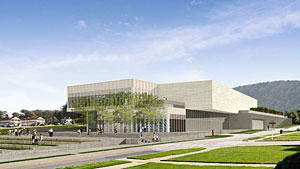Buffeted by criticism of its modern look and trophy-like setting, Gap founder Donald Fisher has agreed to redesign and move a museum that he wants to build in San Francisco’s Presidio, a 1,491-acre national park.

There’s no assurance the changes announced in December will placate the project’s opponents. And it’s a twist nobody would have predicted in December of 2007, when members of the city’s cultural establishment praised the unveiling of what Fisher calls the Contemporary Art Museum at the Presidio (CAMP)—an institution his family would create and endow to display its art collection, considered to be one of America’s finest private collections of post-World War II paintings and sculptures.
But the proposal drew fire from all sides. Much of the debate involved the site: Fisher sought to erect a 100,000-square-foot museum at the head of a planned seven-acre “parade ground” in the heart of the former army base. Though Fisher sweetened the pot by offering to contribute $10 million to the parade ground project, the approach was challenged by everyone from history buffs to the National Park Service, which warned that the museum as planned could endanger the Presidio’s status as a National Historic Landmark.
The controversy was exacerbated by CAMP’s design—a sharp-edged collage of two long rectangles set atop each other and clad in white concrete and glass. Richard Gluckman of New York’s Gluckman Mayner Architects, assisted by San Francisco’s WRNS Studio, made the case that such design elements as the width of the structural bays evoked the surrounding context of 19th century barracks. But his arguments made little headway.
The Presidio is part of the National Park System but is managed by the Presidio Trust, a seven-member board that has approval power over all development projects. After delaying a decision several times because of consultations with park watchdogs and preservationists, Trust officials made it clear in November that the museum proposal would be rejected unless it was scaled back and toned down. In response, Fisher agreed to submit a new plan that would break CAMP into two buildings, locating the largest south of the parade ground.
Fisher is expected to show a revised design in January, though a vote on the project by the Trust is unlikely before summer.



Post a comment to this article
Report Abusive Comment